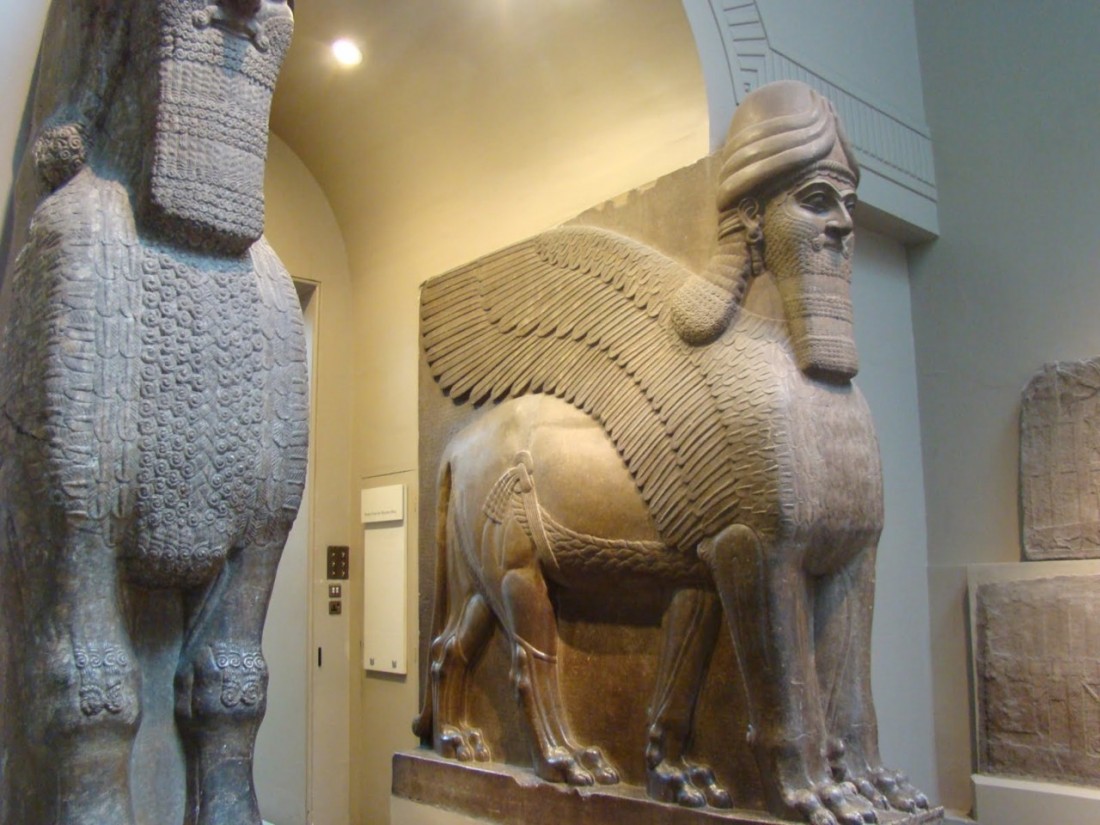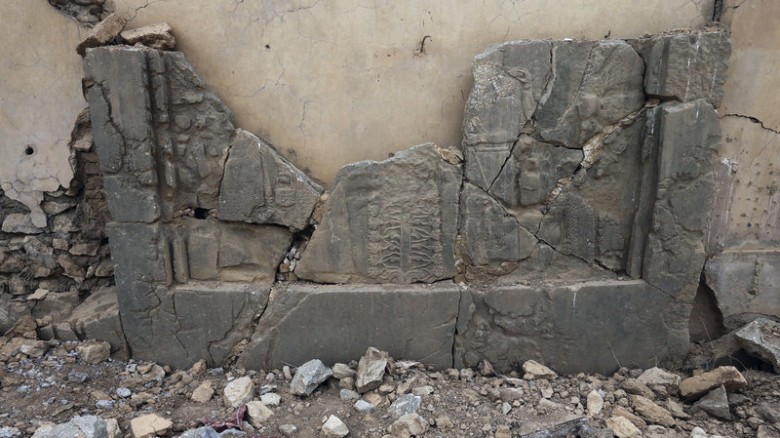ISIL Leaves The Ancient Archaeological Treasure of Nimrud In Ruins

These ancient “guardians of the gates” of Nimrud, called “lamassu”, were rescued by William Henry Layard and preserved at The British National Museum. Similar ancient treasures remaining at Nimrud were destroyed by Isil.
NPR, “In Northern Iraq, ISIS Leaves Behind An Archaeological Treasure In Ruins”, 26 Nov 2016:
In northern Iraq, outside Mosulin 2014, The Islamic State captured the ancient site of Nimrud and destroyed many of its archaeological treasures that date back 3,000 years. Isil were recently driven out of Nimrud, allowing archaeologists and others to come back and survey the extensive damage.
....including what remained of the remnants of temples and roads to the ancient palace of Ashurnasirpal II.
The king of the Assyrian empire, he built his palace at Nimrud almost three millennia ago. Enough of the cuneiform inscriptions, carved stone friezes and sculptures were left that it had been reconstructed throughout the 20th century by Iraqi and international archaeologists, and later by the Iraqi State Board of Antiquities and Heritage, as a kind of on-site museum, where visitors could really imagine the stately building on a hill.
[There was] great pair of sculptures guarding the gate – the mythical beast called a lamassu with the face of a man, body of a bull and the wings of an eagle.
“It was very important to put them at the gates,” she explained recently, “to drive away evil spirits from the city.”
[...]
Then, in 2014, the Islamic State surged through Iraq, taking nearly a third of the country’s territory, along with several ancient sites, including Nimrud, which is about 20 miles southeast of Mosul. They smashed and blew up Ashurnasirpal II’s palace.
[...] attacking the masonry and sculptures, deeming them heretical.
Last week, the Iraqi army retook Nimrud from the extremists, part of a push by an assortment of Iraqi security forces to dislodge ISIS from Mosul and surrounding areas. So Salih returned to see the site for herself.
[...]
In front of the grand entrance to what archaeologists call the northwest palace, built with thick walls around a central courtyard, was a grim pile of chunks
[...]
Ancient tablets with cuneiform writing lie around in pieces. The entrance to the palace is blocked with rubble, with tiny pieces of ancient inscription mixed up in it. A climb to the top of the walls reveals a courtyard strewn with wreckage.
The pride of the palace used to be a stone frieze of the Assyrian figures known as winged genies.
[...]

Now they are all but destroyed.
And despite numerous international initiatives and conferences on emergency heritage management, despite regular statements by Iraqi officials about the importance of the country’s ancient heritage, no soldier is guarding the site. Not so much as a local tribesman.
[...]
Although the site is historically Assyrian, it is not just Iraq’s small, Assyrian minority that sees it as part of its history. Iraqis often cite Nimrud as a source of national pride, part of the long history of the land once known as Mesopotamia.
[...]
No one knows when that might start. The British Museum is leading a project to train Iraqi archaeologists in emergency management.
“All the area which has been under ISIS control will need to be inspected and assessed,” said John MacGinnis, the archaeologist who leads the project.
But MacGinnis said for that to begin, the area has to be secure. And at Nimrud, ISIS is still within mortar range. The sounds of fighting nearby echo every day around the ruins.

Posted by Sacred Tree on Sun, 25 Dec 2016 22:26 | #
Celebrating re-birth at Nimrud..